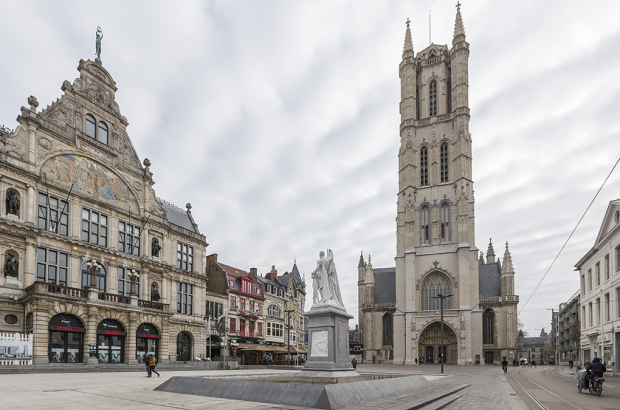- Daily & Weekly newsletters
- Buy & download The Bulletin
- Comment on our articles
800 skeletons found behind Ghent’s Cathedral
Archaeological work being done behind Sint-Baafs Cathedral in Ghent has turned up some 800 intact skeletons, many of them children. “The number has taken us by surprise,” cathedral spokesperson Ludo Collin said.
The cathedral (pictured to the right) is undergoing renovations, which made it a perfect time for archaeologists to explore the grounds. Along with the 800 skeletons, they found 5,000 kilograms of loose bones. “We knew that the area behind the cathedral, where the Bishop’s House is now located, was a cemetery for the people who lived in the centre of Ghent,” Collin told VRT.
This cemetery was in use from about the 11th century to the middle of the 18th century. “It was used for 700 years” continued Collin. “ The graves are six or seven people deep. It’s pretty confronting. And there are many children, which points to a large-scale death of children. This study can provide a huge amount of valuable information.”
Research should provide answers to whether many of these people were buried at the same time, which would suggest an epidemic. The loose bones and fragments “are less scientifically valuable,” said Collin, “but we do want to be respectful of them, so we will give them a place in tombs in the Campo Santo cemetery. We’ll place a text there to say where they were found. We will also place a memorial plaque at the cathedral.”
Anton Ervynck of Flanders’ government heritage agency told Radio 1 that there are “thousands and thousands” more skeletons under the ground in Ghent. “This cemetery was the city’s largest, and it’s been around since possibly the 10th century. By 1300, Ghent had a population of 65,000. They are not all buried under Sint-Baafs, but over the centuries, thousands and thousands of people were indeed buried there.”
This isn’t just the case for Ghent, of course. “Every church older than 200 years had a cemetery around it,” he said. “This practice was largely stopped and the cemeteries closed, but the bodies weren’t necessarily moved.”
Because there wasn’t always enough space to bury people in the city, they were buried on top of one another. “That’s why there are so many skeletal fragments,” he explained. “These are remains from graves that were upended by the digging of new graves.”
Photo courtesy Visit Flanders

















